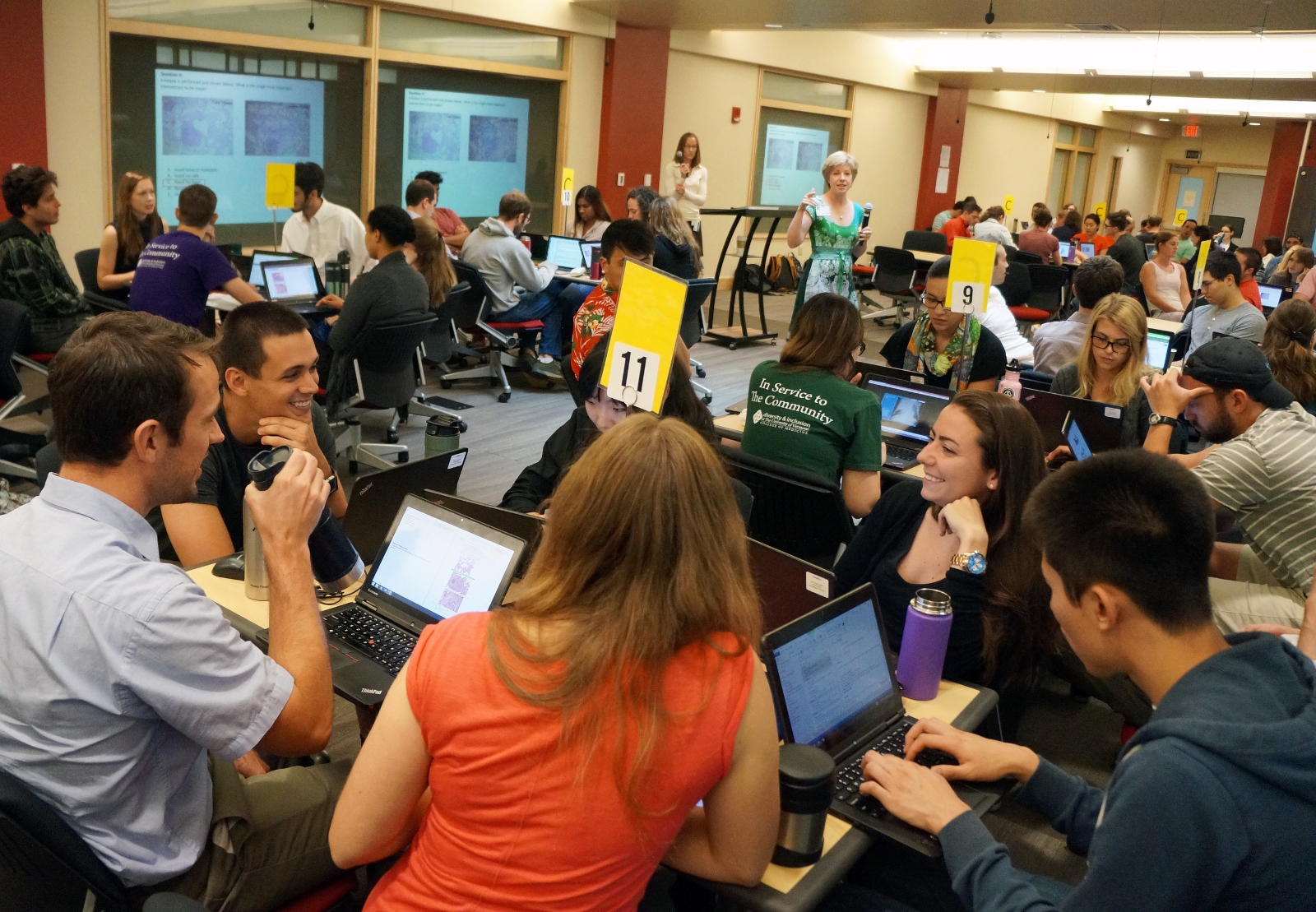Two years from now, the Larner College of Medicine will completely eliminate lectures from its curriculum, adopting a new trend that could transform medical education: Active Learning.
Photo: Erin Post, Larner College of Medicine
Starting in the summer of 2019, a new version of the University of Vermont’s medical school will be missing a common piece found in every medical school: lectures.
Two years from now, the Larner College of Medicine will completely eliminate lectures from its curriculum, adopting a new trend that could transform not only medical education but learning itself: Active Learning.
But what exactly is Active Learning? Scientific research shows that students learn and perform better in an environment where they’re asked to engage and apply knowledge instead of just sitting passively in their seats. Examples of active learning approaches include: Team Based Learning (TBL), Problem-Based Learning (PBL), flipped classroom, simulations, debate and case discussions activities.
Under this new model, students will study the material online and do their homework prior class (a flipped classroom approach). Then, they will take a short quiz to see what they learned followed by a discussion session where students gathered in groups of six will try to solve a medical problem. All this with the guidance of a professor who will act as both a facilitator and an instructor, said William Jeffries, senior associate dean for medical education at Vermont’s Larner College of Medicine, who is leading the effort.
The Larner College of Medicine is not the only medical school that has taken this approach, the Case Western Reserve University’s medical schools has also a no-lecture curriculum. According to The Washington Post, this trend is just part of a reform movement in the teaching of science, technology, engineering and mathematics (STEM) that emphasizes active learning instead of lecturing.
The approach is backed up by research. In 2014 a team of researchers analyzed 225 studies that compared active learning and lectures in STEM courses. The researchers found that test scores improved about 6 percent for students in active learning classes and that students in lecture classes were about 1.5 times more likely to fail than their counterparts in active learning classes.
But transitions like this usually come with a lot of challenges. Both teaching staff and students can resist the change, that is why these efforts should always be backed with research evidence. And lots of patience to wait until seeing real results.
This article from Observatory of the Institute for the Future of Education may be shared under the terms of the license CC BY-NC-SA 4.0 
)
)


)